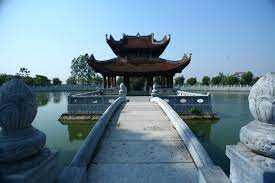The Lý Dynasty, which reigned from 1010 to 1225, played a crucial role in shaping the history of Vietnam. During this period, the Lý rulers faced various challenges, including conflicts with neighboring kingdoms known as the Hồng Bàng Kingdoms. Let’s explore the dynamics of these historical battles and their impact on Vietnam’s development.

1. Background:
The Hồng Bàng Kingdoms were a group of decentralized states located in the northern region of present-day Vietnam. They were established after the collapse of the Chinese domination during the Early Lê Dynasty (c. 10th century). The Hồng Bàng Kingdoms were known for their fierce independence and often clashed with the Lý Dynasty over territorial control and influence.
2. Battles and Conflicts:
Throughout the Lý Dynasty’s rule, there were several military encounters with the Hồng Bàng Kingdoms. These conflicts were mainly due to territorial disputes, attempts to expand influence, and the desire to control strategic resources in the region.
3. Efforts for Unification:
Despite the hostilities, some Lý rulers sought to unify the Hồng Bàng Kingdoms under their authority to strengthen the central rule. These efforts were met with varying degrees of success, as some kingdoms aligned with the Lý Dynasty while others fiercely resisted.
4. Cultural and Political Exchange:
Amidst the conflicts, there were instances of cultural and political exchange between the Lý Dynasty and the Hồng Bàng Kingdoms. Interactions between these kingdoms facilitated the sharing of ideas, trade, and technology, contributing to the cultural richness of Vietnam.
5. Legacy and Impact:
The conflicts with the Hồng Bàng Kingdoms shaped the political landscape of ancient Vietnam. While some regions eventually became part of the Lý Dynasty’s territory, others retained their independence. This period marked a complex interplay between centralization and regional autonomy.
6. Transition to Later Dynasties:
Towards the latter part of the Lý Dynasty’s rule, conflicts with the Hồng Bàng Kingdoms intensified, contributing to internal instability. This paved the way for the eventual decline of the Lý Dynasty and the rise of subsequent dynasties in Vietnamese history.
Conclusion:
The struggles between the Lý Dynasty and the Hồng Bàng Kingdoms were significant in shaping Vietnam’s historical development during the 11th and 12th centuries. While these conflicts sometimes resulted in territorial expansion, they also fostered cultural exchange and regional autonomy. The interactions between these kingdoms played a crucial role in shaping the political and cultural landscape of ancient Vietnam, leaving a lasting impact on the nation’s history.









